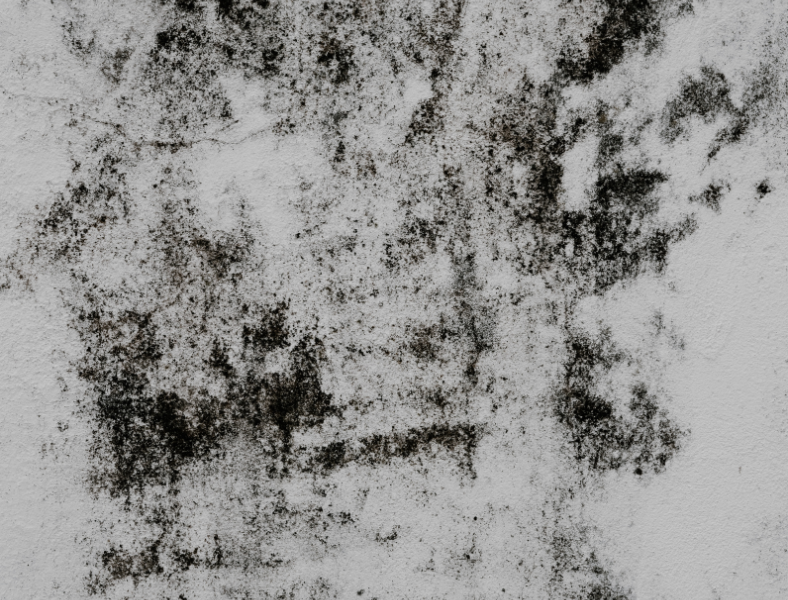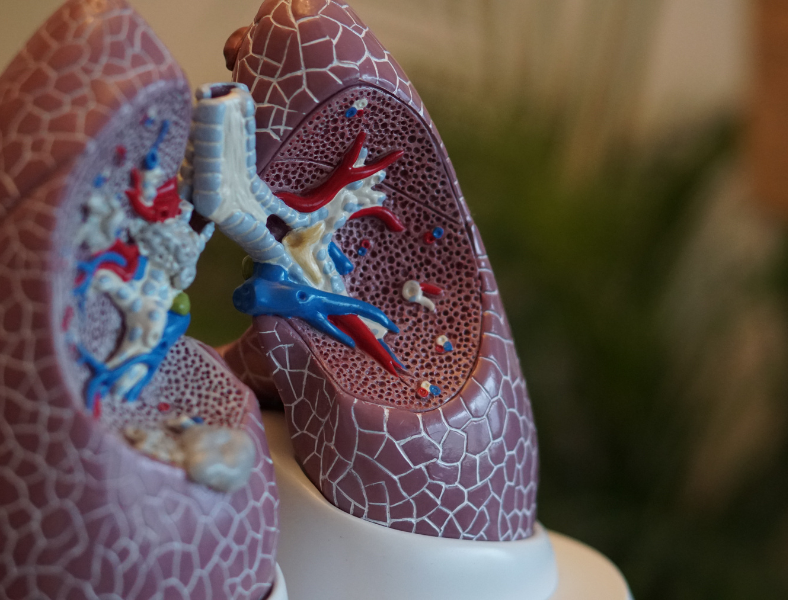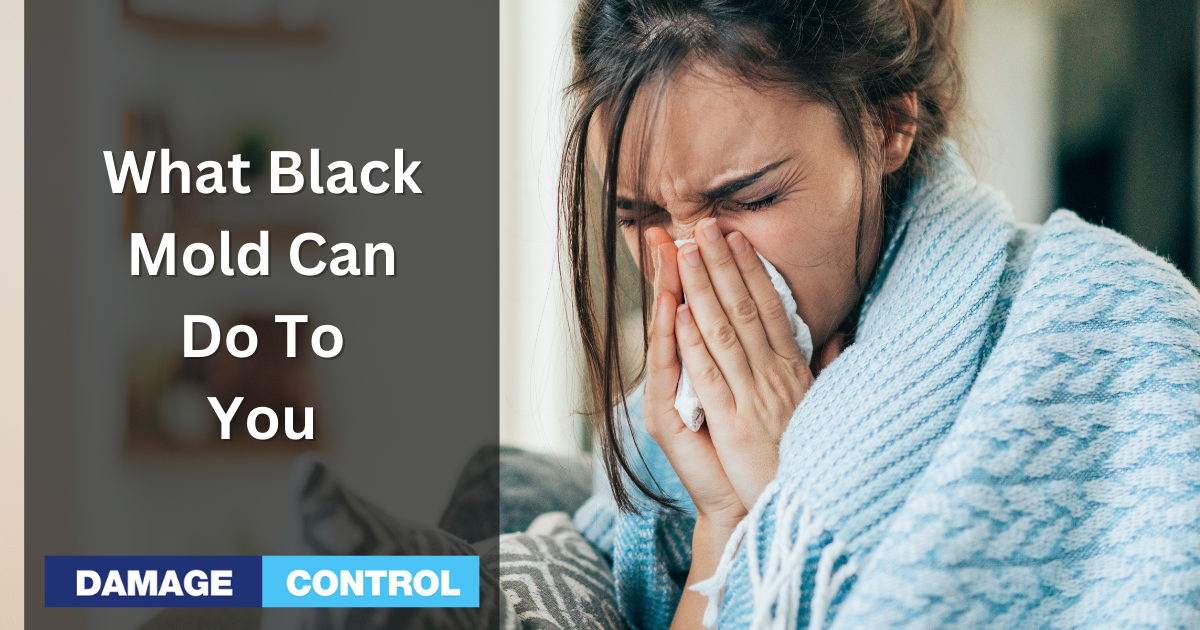Greetings, dear readers! Today, we venture into the murky world of black mold. Spooky, right? Well, don't fret! We're here to illuminate the shadows and dispel your fears. Together, we'll learn what this creepy fungus is, why it's important to understand its dangers, and get a sneak peek at the rest of our riveting tale. So, buckle up, and let's dive in!
What is Black Mold?
 Now, what exactly is black mold? It's a tenacious, dark-hued fungus. Its scientific name? Stachybotrys chartarum. Quite a mouthful, huh? But don't worry, we'll stick to “black mold” here. This pesky intruder thrives in damp, humid areas. It adores feasting on materials like wood, paper, and insulation. Yum!
Now, what exactly is black mold? It's a tenacious, dark-hued fungus. Its scientific name? Stachybotrys chartarum. Quite a mouthful, huh? But don't worry, we'll stick to “black mold” here. This pesky intruder thrives in damp, humid areas. It adores feasting on materials like wood, paper, and insulation. Yum!
Why Understand the Dangers?
So, why should you care about the perils of black mold? Simple. It's a sneaky menace that can wreak havoc on your health and home. And, here's the kicker: black mold has a history of being used as a bioweapon! Yikes! Knowledge is power, friends! By understanding the hazards, we can take the necessary precautions to protect ourselves and our loved ones from this formidable foe.
Stay tuned, as we'll soon explore the health risks associated with black mold exposure, signs of its presence, and tips on how to banish it from your abode. Trust us, by the end of this enlightening adventure, you'll be a bona fide mold-busting expert!
Common Types of Black Mold
Alright, fellow mold-busters, let's dig deeper into the world of black mold. As we mentioned earlier, black mold is a tenacious fungus that goes by the name Stachybotrys chartarum. It's a sly character that loves to make itself at home in damp, humid environments. But what exactly sets it apart from other fungi? Read on to find out!
Surprisingly, there's more than one type of black mold! Here are a couple of the most notorious varieties:
Stachybotrys chartarum: Our main culprit, this mold sports a dark greenish-black hue. It's a slow grower, but don't underestimate it – it can be highly toxic!
Aspergillus niger: Also dark and dangerous, this mold loves damp indoor spaces. It's not as toxic as Stachybotrys chartarum, but it can still cause health problems.
How to Identify Black Mold
Now, for the million-dollar question: How can you spot black mold? Fear not, for we have your back! Here are some telltale signs to watch out for:
Color
Black mold typically appears as dark green or black, with a slimy or sooty texture.
Location
Black mold often lurks in damp areas, like basements, bathrooms, and kitchens.
Odor
Take a whiff! Black mold often emits a musty, unpleasant smell.
Armed with this knowledge, you'll be well on your way to identifying and outsmarting the sneaky world of black mold! But don't go just yet – our adventure isn't over! Stay tuned for more valuable intel on the health risks, signs of black mold presence, and ways to show this pesky intruder the door.
The Health Risks of Black Mold
 Alright, my mold-busting comrades! Let's get down to the nitty-gritty: the health risks of black mold. You see, black mold isn't just an eyesore; it can be downright hazardous to your well-being. Exposure to this uninvited guest may lead to respiratory issues, skin irritation, and even immune system troubles. Yowza!
Alright, my mold-busting comrades! Let's get down to the nitty-gritty: the health risks of black mold. You see, black mold isn't just an eyesore; it can be downright hazardous to your well-being. Exposure to this uninvited guest may lead to respiratory issues, skin irritation, and even immune system troubles. Yowza!
How Black Mold Exposure Affects Different People
Now, not everyone reacts to black mold in the same way. Some may have mild symptoms, while others might experience more severe reactions. Children, elderly folks, and those with weakened immune systems are particularly vulnerable. So, it's essential to be vigilant and act swiftly if black mold comes a-knockin'.
Respiratory Issues
Now, let's delve into the respiratory issues that black mold can trigger. Inhaling this pesky fungus's spores can cause inflammation and irritation in your respiratory system. Not a pretty picture, right? But fear not, we're here to keep you in the know!
How Black Mold Affects the Lungs
When black mold infiltrates your lungs, it can lead to an assortment of troubles. The inhaled spores can prompt your immune system to overreact, causing inflammation. This pesky response may exacerbate existing lung conditions, like asthma, or even cause new ones. Yikes!
Common Respiratory Symptoms Caused by Black Mold
To help you stay vigilant, here are some common respiratory symptoms to look out for:
Coughing
A persistent, pesky cough may be a sign that black mold is lurking nearby.
Wheezing
If you're wheezing like a rusty door hinge, it might be time to investigate your surroundings.
Shortness of breath
Struggling to catch your breath? Don't ignore it – black mold could be the culprit!
Chest tightness
Feeling like there's an invisible weight on your chest? Black mold might be to blame.
Knowledge is power, dear friends! Stay alert for these symptoms and keep black mold at bay. But our adventure doesn't end here.
Skin Irritation
Let's shift gears and discuss another sneaky side effect of black mold exposure: skin irritation. You see, black mold isn't just a lung botherer; it can also cause your skin to throw a fit. When black mold spores land on your skin, they can trigger inflammation and itching. How rude!
Types of Skin Irritation Caused by Black Mold
Black mold can cause various skin issues, including:
Dermatitis
This fancy term refers to inflamed, itchy skin. It can be red, swollen, and downright uncomfortable.
Rashes
Black mold can prompt your skin to break out in an angry, red rash. Oh, the injustice!
Blisters
In severe cases, exposure to black mold may even cause fluid-filled blisters on your skin. Ouch!
Common Skin Symptoms Caused by Black Mold
Here's a handy list of common skin symptoms to watch out for:
Redness
If your skin suddenly turns red like a ripe tomato, it might be a warning sign of black mold.
Itching
Persistent itching that just won't quit? Black mold could be the offender.
Swelling
Swollen, puffy skin might indicate that black mold spores have paid an unwelcome visit.
Dry, flaky patches
Dry, flaky skin can be another sneaky sign of black mold exposure.
With this knowledge in hand, you'll be better equipped to recognize and tackle black mold-related skin issues. Keep an eye out for these symptoms, and don't let black mold catch you off guard
Allergic Reactions
Next on our black mold hit list: allergic reactions. That's right, friends! Exposure to this dastardly fungus can cause your immune system to go haywire, resulting in all sorts of annoying symptoms. Let's dive in and learn more about these pesky reactions!
Types of Allergic Reactions
Black mold can cause a variety of allergic reactions, including:
Hay fever-like symptoms
Sneezing, runny nose, and itchy eyes are just a few of the hay fever-esque symptoms that black mold can trigger.
Asthma attacks
Exposure to black mold can cause flare-ups and make breathing even more challenging for those with asthma.
Hypersensitivity pneumonitis
This mouthful of a term describes a rare, but severe, lung inflammation that can occur in response to black mold exposure.
Common Allergic Symptoms Caused by Black Mold
Keep a keen eye out for these common allergic symptoms:
Sneezing
A sudden sneeze attack might mean black mold is lurking nearby.
Runny or stuffy nose
If your nose is running like a faucet or feels as congested as a traffic jam, it could be a black mold warning.
Itchy, watery eyes
Eyes that itch and water like a leaky faucet? Black mold might be the offender.
Sore throat
A sore, scratchy throat could be another sign that black mold is in the vicinity.
By staying alert to these symptoms, you'll be better prepared to recognize and deal with the allergic reactions caused by black mold. Knowledge is your secret weapon, dear readers.
Neurological Issues
Description of Neurological Issues Caused by Black Mold
Hold onto your hats, folks! Our black mold adventure takes a turn toward the brain. That's right, exposure to this crafty fungus can lead to neurological issues. How, you ask? Well, certain toxic compounds produced by black mold can mess with your noggin. Let's dive deeper into this mystery!
How Black Mold Affects the Brain
Black mold produces mycotoxins – a villainous group of toxic compounds. When you breathe in these baddies, they can enter your bloodstream and travel to your brain. Once there, they can disrupt normal brain function and cause a plethora of problems. Yikes!
Common Neurological Symptoms Caused by Black Mold
Be on the lookout for these neurological symptoms:
Headaches
A sudden, persistent headache might be a warning that black mold is up to no good.
Dizziness
Feeling woozy or off-balance? It could be a sign of black mold exposure.
Memory problems
If you're having trouble remembering things, black mold might be the culprit.
Concentration issues
Struggling to focus on tasks? Don't dismiss it – black mold could be to blame.
By recognizing these neurological symptoms, you'll be better prepared to tackle the challenges posed by black mold exposure. Knowledge is power, dear readers, and we're here to help you stay one step ahead of this tricky fungus!
Causes of Black Mold
Conditions that Promote the Growth of Black Mold
Now that we've explored the dark side of black mold, let's get to the root of the problem. What causes this sneaky fungus to flourish? Black mold loves damp, humid environments. It thrives where moisture is king. So, let's take a closer look at the conditions that make black mold feel right at home.
How Moisture Contributes to the Growth of Black Mold
Moisture is like a VIP pass for black mold. When moisture levels rise, this insidious intruder sets up shop and starts multiplying. It's like an all-you-can-eat buffet for black mold – damp surfaces provide the perfect conditions for it to feast and grow. So, to keep black mold at bay, it's crucial to tackle moisture issues head-on.
Common Sources of Moisture in the Home
To help you wage war against black mold, here are some common moisture sources to watch out for:
Leaky pipes
Keep an eye on your plumbing! A small leak can create the perfect breeding ground for black mold.
Flooding
If your home has experienced flooding, act quickly to dry everything out and prevent black mold from moving in.
Humidity
High humidity can make your home a black mold paradise. Use dehumidifiers and proper ventilation to keep moisture levels in check.
Condensation
Keep an eye on windows, pipes, and other surfaces where condensation may form – these can be black mold hotspots.
By staying vigilant and tackling moisture issues, you'll be well on your way to preventing black mold from invading your humble abode. Keep up the good work, mold-busting warriors!
Prevention of Black Mold
Steps to Prevent Black Mold Growth
Armed with knowledge, it's time to take action, my mold-busting pals! Let's explore some steps to prevent black mold from turning your home into a fungal fiesta. Prevention is key, so let's get cracking on those mold-fighting maneuvers!
Importance of Addressing Moisture Issues
As we've learned, moisture is black mold's best buddy. By addressing moisture issues, you'll be putting the kibosh on this sneaky fungus's plans for world domination – or at least, home domination. Remember, a dry home is a happy home, and a happy home is a black mold-free home!
Tips for Maintaining a Dry and Healthy Home
Here are some top tips to help you maintain a dry, healthy, and black mold-free abode:
Fix leaks
Keep an eye on your plumbing and repair any leaks ASAP. Don't give black mold a chance to settle in!
Ventilate
Make sure your home is well-ventilated, especially in high-moisture areas like bathrooms and kitchens.
Dehumidify
Keep humidity levels below 60% to deter black mold growth. Dehumidifiers and air conditioners can be your trusty allies.
Insulate
Proper insulation can help prevent condensation and keep black mold at bay.
Clean
Regularly clean surfaces and materials that are prone to mold growth, such as bathroom tiles and shower curtains.
By following these tips, you'll be well on your way to keeping your home mold-free and healthy. So go forth, mold-busting warriors, and show black mold who's boss!
Removing Black Mold
When to Hire a Professional
Let's talk about evicting black mold from your home. Sometimes, it's best to call in the cavalry – that's right, professional mold remediators. If the mold infestation is extensive, hard to reach, or you suspect it's hiding behind walls or ceilings, it's time to call in the experts. Don't worry, they've got your back!
DIY Methods for Removing Black Mold
For smaller, more manageable mold issues, you might opt to tackle the problem yourself. Here are a few DIY methods to help you show black mold the door:
Vinegar
Grab a spray bottle, fill it with white vinegar, and spritz the moldy area. Let it sit for an hour, then scrub away the mold and wipe clean.
Baking soda
Mix baking soda and water to form a paste, apply it to the moldy surface, and scrub away the mold. Wipe clean and let dry.
Hydrogen peroxide
Fill a spray bottle with 3% hydrogen peroxide, spritz the moldy area, let it sit for 10 minutes, and scrub away the mold. Wipe clean and let dry.
Precautions to Take When Removing Black Mold
Safety first, mold-busting friends! When removing black mold, it's essential to take proper precautions:
Gear up
Wear gloves, goggles, and a face mask to protect yourself from mold spores.
Ventilate
Make sure the area is well-ventilated to minimize mold spore inhalation.
Seal off
Close doors and cover vents to prevent mold spores from spreading to other parts of your home.
Dispose of materials
After mold removal, seal any contaminated materials in plastic bags and dispose of them properly.
With these tips and precautions, you're well on your way to reclaiming your home from black mold. Keep up the good fight, mold-busting warriors!
Cleaning Up After Black Mold
Alright, mold-busting friends, the battle is almost won! But don't drop your guard just yet – it's time to clean up after black mold. Thorough cleaning is crucial to ensure no sneaky spores are left behind, plotting their revenge. Let's make sure your victory is complete and long-lasting!
Steps to Take to Ensure Complete Removal
Follow these steps to keep your home mold-free and fabulous:
Scrub surfaces
Use a stiff brush and a cleaning solution (like vinegar or hydrogen peroxide) to scrub all surfaces where black mold was present. Leave no trace behind!
Dry thoroughly
Make sure all surfaces are completely dry after cleaning. Remember, moisture is black mold's partner in crime!
HEPA vacuum
Vacuum the entire area with a HEPA-filtered vacuum cleaner. This will capture any lingering mold spores and prevent them from causing future trouble.
How to Prevent Black Mold from Returning
Keep black mold from making an unwelcome comeback by following these trusty tips:
Address moisture issues
Stay vigilant and tackle any moisture problems in your home. A dry home is a mold-free home!
Maintain good air circulation
Keep your home well-ventilated to prevent mold growth. Let that fresh air flow!
Monitor humidity levels
Keep humidity levels below 60% to keep black mold at bay. Dehumidifiers and air conditioners can be your trusty sidekicks.
With these tips, you'll keep your home spick-and-span and free of pesky black mold. So go forth, mold-busting warriors, and enjoy your victory over the dark forces of fungus!
Legal and Insurance Issues
Now, let's delve into the legal labyrinth that is black mold. Navigating the world of mold-related legal issues can be tricky, but fear not, dear readers! We're here to help you make sense of it all. Legal issues may arise in various situations, such as landlord-tenant disputes, home purchases, or workplace exposure. Knowledge is power, so let's get informed!
How Insurance Policies Cover Black Mold Damage
Insurance policies can be as tangled as a ball of string, but when it comes to black mold, they're an essential piece of the puzzle. Coverage for mold damage varies widely among policies, with some providing comprehensive protection, while others have limited coverage or exclude mold damage altogether. It's crucial to review your policy and understand what's covered – and what's not.
Importance of Understanding Insurance Policies
When it comes to black mold, knowledge is your secret weapon – and that includes understanding your insurance policy. By knowing what your policy covers, you'll be prepared to handle any mold-related issues that come your way. Plus, you can take steps to adjust your coverage if needed, ensuring you're protected from any moldy misadventures.
So, mold-busting warriors, make sure you've got your legal and insurance ducks in a row. That way, you'll be ready to tackle any black mold challenges that come your way, armed with the power of knowledge and the support of your trusty insurance policy!
Conclusion
Well, mold-busting friends, we've reached the end of our black mold adventure. We've uncovered the dark secrets of this sinister fungus – from its health risks and bioweapon past to its sneaky ways of invading our homes. Black mold is no joke, but we can conquer it armed with knowledge!
Prevention and removal are the keys to keeping black mold at bay. By addressing moisture issues, maintaining a dry and healthy home, and cleaning up after mold outbreaks, we can keep our homes fungus-free and our families safe. So, let's take action and show black mold who's boss!

